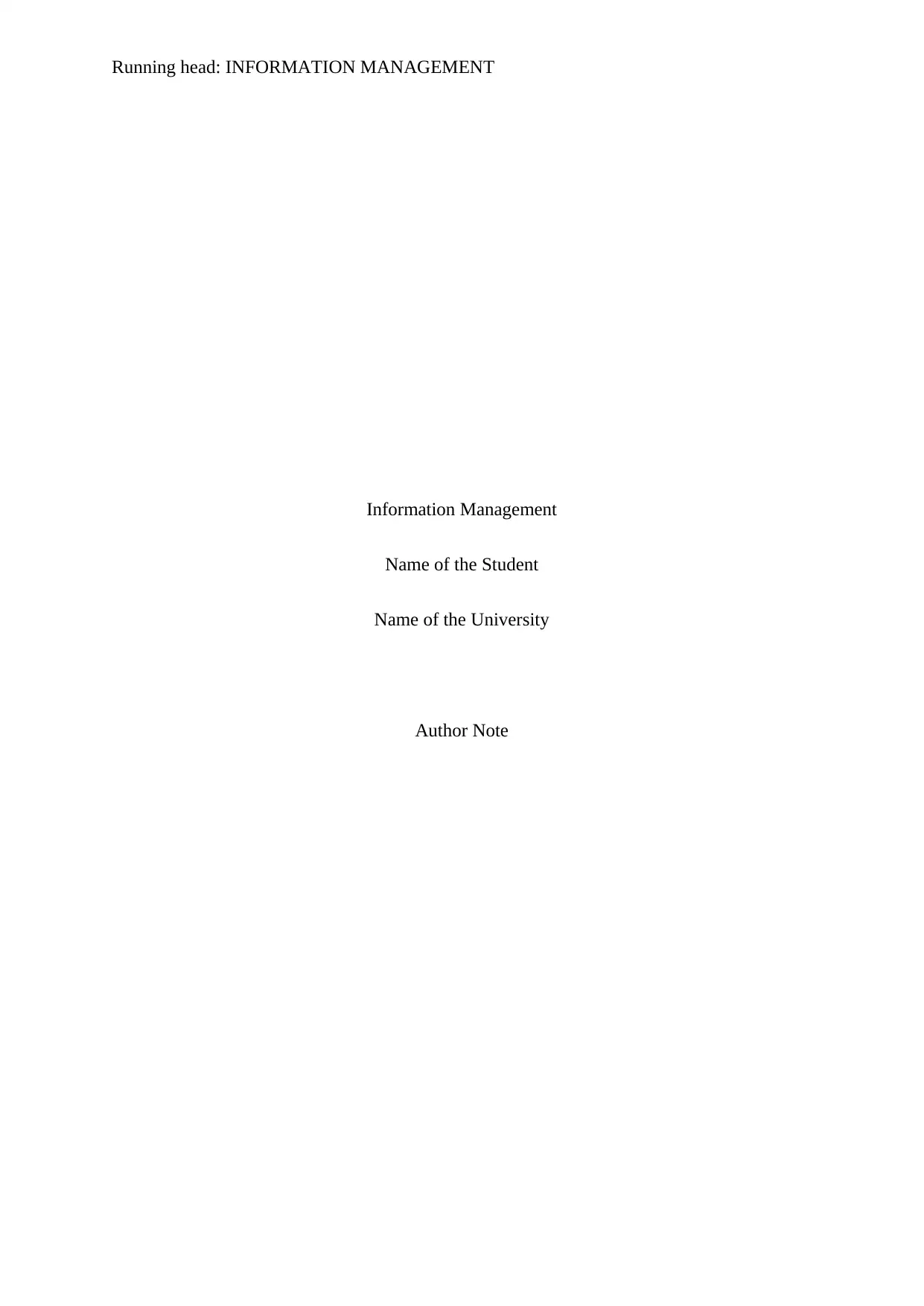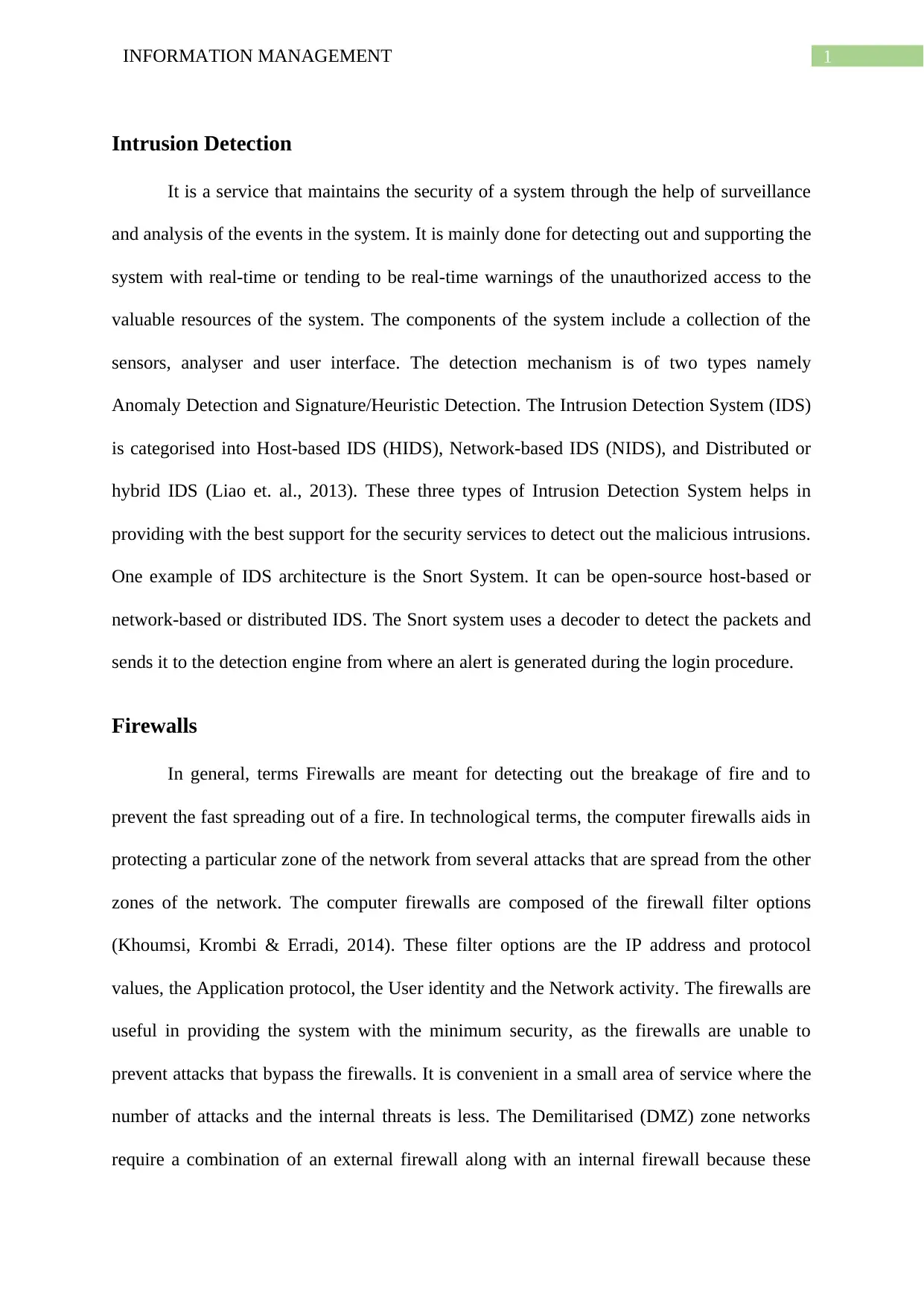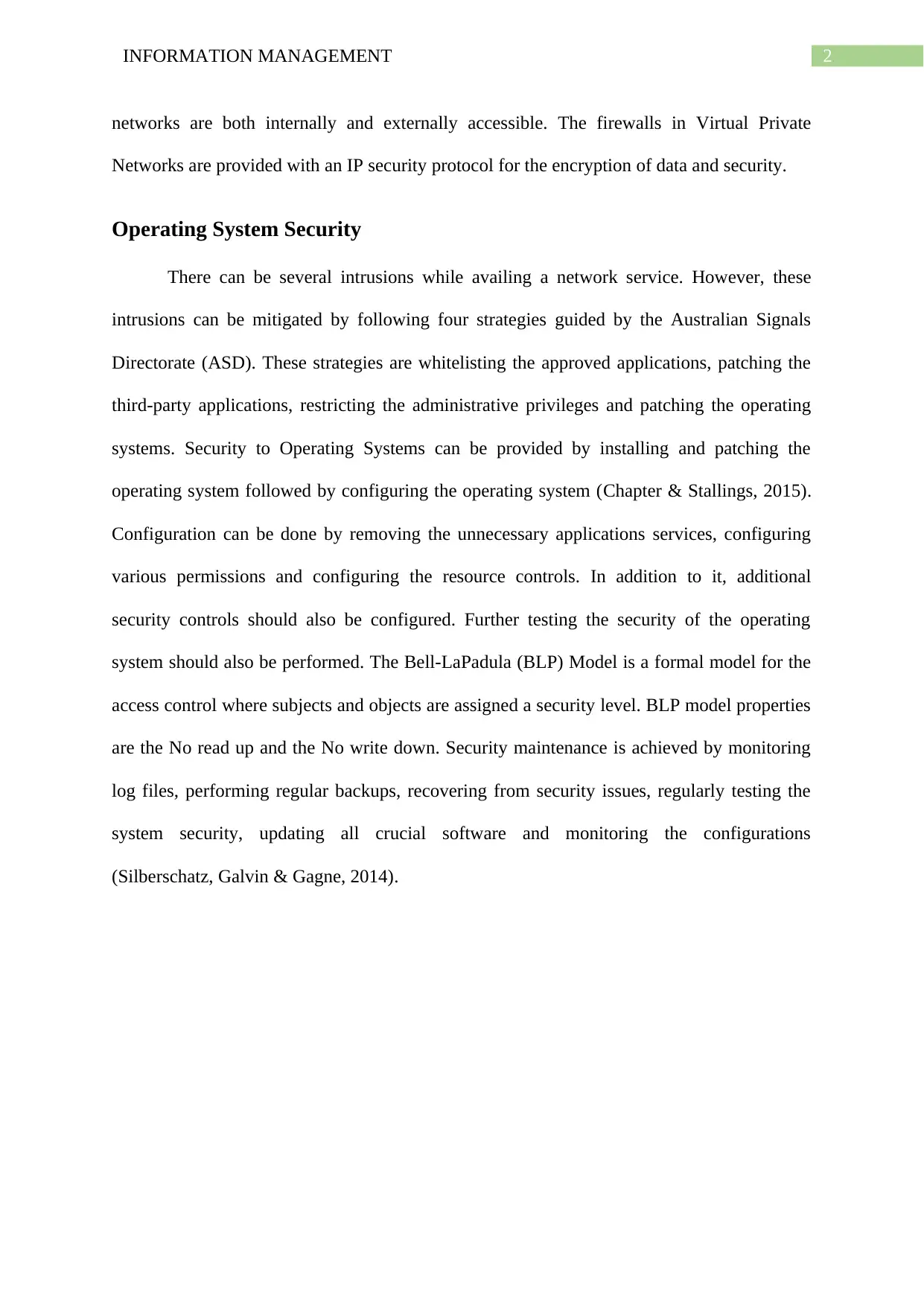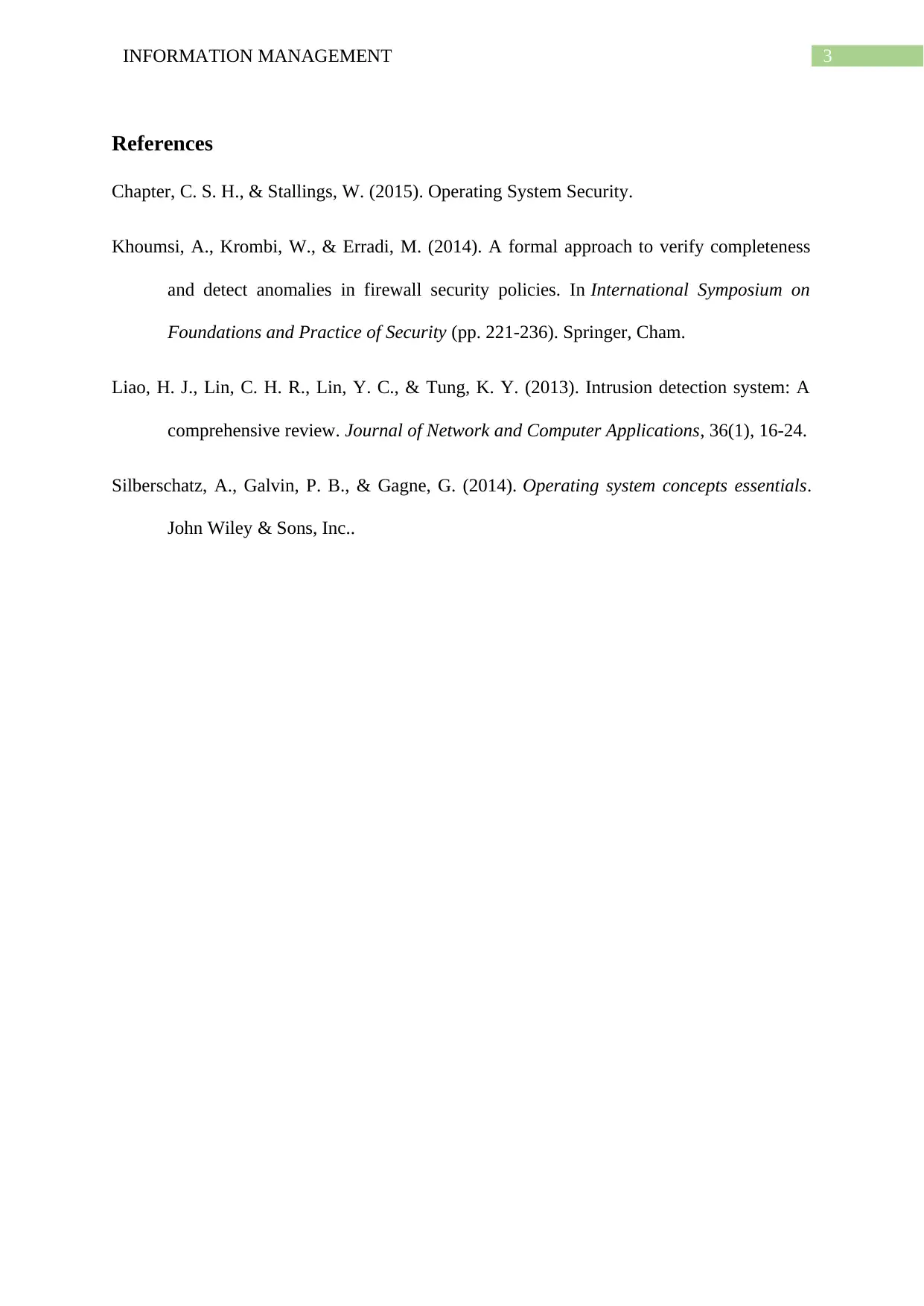2808ICT Information Management: Intrusion Detection, Firewalls & OS
VerifiedAdded on 2023/06/07
|4
|778
|289
Report
AI Summary
This report provides an overview of intrusion detection systems (IDS), firewalls, and operating system (OS) security, crucial components of information management. It details the components, principles, and detection mechanisms of IDS, including anomaly and signature detection, and categorizes IDS into host-based, network-based, and distributed systems, with the Snort system as an example. The report explains how firewalls protect networks by filtering traffic based on IP addresses, protocols, and user identities, highlighting their limitations and the need for combined external and internal firewalls in DMZ networks. Furthermore, it discusses strategies for securing operating systems, such as whitelisting applications, patching, and restricting administrative privileges, and introduces the Bell-LaPadula (BLP) model for access control. The report emphasizes the importance of security maintenance through monitoring, backups, regular testing, and software updates. Desklib offers more resources like this to aid students in their studies.
1 out of 4











![[object Object]](/_next/static/media/star-bottom.7253800d.svg)